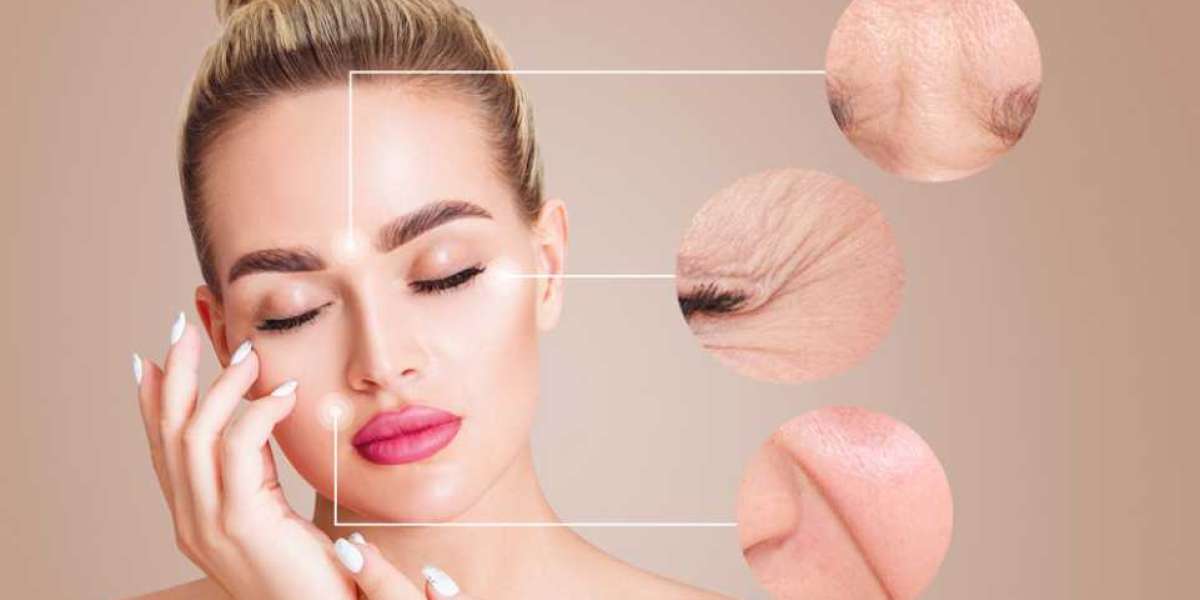Identify Your Skin Type:
- Oily Skin: Excess oil production, enlarged pores, prone to acne and blackheads.
- Dry Skin: Tightness, flakiness, dullness, and sometimes redness or itchiness.
- Combination Skin: Oily in some areas (usually the T-zone - forehead, nose, and chin) and dry in others.
- Sensitive Skin: Easily irritated, may react to certain skincare products or environmental factors.
Basic Skincare Steps:
- Cleansing: Use a gentle cleanser appropriate for your skin type. For oily skin, consider a foaming or gel cleanser. For dry or sensitive skin, opt for a cream or lotion cleanser.
- Toning: Optional but can help balance the skin's pH levels and remove any remaining impurities. Choose an alcohol-free toner suited to your skin type.
- Moisturizing: Essential for all skin types. Choose a moisturizer that matches your skin type - lightweight for oily skin, richer for dry skin.
- Sun Protection: Apply a broad-spectrum sunscreen with at least SPF 30 every morning, regardless of your skin type. This helps protect your skin from harmful UV rays and prevents premature aging.
Additional Steps Based on Skin Type:
Oily Skin:
- Use a salicylic acid or benzoyl peroxide-based cleanser to help control oil and prevent breakouts.
- Incorporate oil-free or gel-based moisturizers to hydrate without adding excess oil.
- Use clay masks once or twice a week to absorb excess oil and tighten pores.
Dry Skin:
- Consider using a hydrating or creamy cleanser to avoid stripping natural oils.
- Use a rich, emollient moisturizer to provide intense hydration.
- Incorporate hydrating serums or facial oils containing ingredients like hyaluronic acid or ceramides.
- Limit exfoliation to once or twice a week to avoid further drying out the skin.
Combination Skin:
- Use a gentle cleanser that can address both oily and dry areas without exacerbating either.
- Apply a lightweight moisturizer to the oily areas and a richer moisturizer to the dry areas.
- Consider using mattifying products on oily areas to control shine.
Sensitive Skin:
- Choose fragrance-free and hypoallergenic products to minimize the risk of irritation.
- Look for soothing ingredients like aloe vera, chamomile, or colloidal oatmeal in your skincare products.
- Perform patch tests before trying new products and introduce them gradually to your skincare routine.
Weekly Treatments:
- Incorporate treatments like exfoliation (chemical or physical) and face masks suited to your skin type once or twice a week to address specific concerns such as dullness, congestion, or hydration.
Hydration and Diet:
- Drink plenty of water to keep your skin hydrated from the inside out.
- Eat a balanced diet rich in fruits, vegetables, and healthy fats to support overall skin health.
Remember, consistency is key when it comes to skincare. It may take some trial and error to find the perfect routine for your skin type, so pay attention to how your skin responds to different products and adjust accordingly. If you have persistent skin concerns or conditions, consider consulting a dermatologist for personalized advice and treatment options.
Oily Skin:
Cleansing: Use a foaming or gel-based cleanser containing salicylic acid (BHA) or benzoyl peroxide. These ingredients help to dissolve excess oil, unclog pores, and reduce acne-causing bacteria.
Toning: Apply an alcohol-free toner containing ingredients like witch hazel or niacinamide. These help to balance oil production, refine pores, and provide a mattifying effect.
Treatment: Incorporate a lightweight serum or spot treatment containing salicylic acid or retinoids. These ingredients help to regulate oil production, exfoliate dead skin cells, and prevent breakouts.
Moisturizing: Opt for oil-free or gel-based moisturizers that are non-comedogenic (won't clog pores). Look for ingredients like hyaluronic acid or glycerin to hydrate without adding excess oil.
Sun Protection: Use an oil-free, non-comedogenic sunscreen with at least SPF 30 daily to protect against UV damage without exacerbating oiliness.
Weekly Treatment: Use a clay mask once or twice a week to absorb excess oil, purify pores, and prevent blackheads.
Dry Skin:
Cleansing: Choose a hydrating or creamy cleanser formulated with gentle surfactants and moisturizing ingredients like ceramides or glycerin to cleanse without stripping natural oils.
Toning: Use a hydrating toner containing ingredients like hyaluronic acid or rosewater to replenish moisture, soothe dryness, and restore the skin's barrier function.
Treatment: Incorporate a hydrating serum or facial oil rich in emollients like squalane or jojoba oil. These ingredients help to nourish and repair the skin's moisture barrier.
Moisturizing: Opt for rich, emollient moisturizers containing ingredients like shea butter, petrolatum, or dimethicone to provide intense hydration and prevent moisture loss.
Sun Protection: Use a moisturizing sunscreen with SPF 30 or higher daily to protect against UV damage and prevent further dehydration.
Weekly Treatment: Exfoliate once or twice a week using a gentle chemical exfoliant containing alpha hydroxy acids (AHAs) or beta hydroxy acids (BHAs) to remove dead skin cells and improve skin texture without causing irritation.
Combination Skin:
Cleansing: Use a gentle, pH-balanced cleanser that can effectively remove excess oil from the T-zone without over-drying the cheeks.
Toning: Apply a balancing toner containing ingredients like niacinamide or green tea extract to regulate oil production in the T-zone while hydrating dry areas.
Treatment: Incorporate a lightweight hydrating serum containing hyaluronic acid or panthenol to provide moisture to dry areas without exacerbating oiliness in the T-zone.
Moisturizing: Use a lightweight, non-comedogenic moisturizer on oily areas and a richer moisturizer on dry areas to balance hydration levels across the face.
Sun Protection: Apply a broad-spectrum sunscreen with SPF 30 daily to protect all areas of the face from UV damage.
Weekly Treatment: Use a combination of clay mask on the T-zone to control oiliness and a hydrating mask on dry areas to replenish moisture and soothe the skin.
Sensitive Skin:
Cleansing: Opt for a gentle, fragrance-free cleanser with a minimal ingredient list to avoid potential irritants. Look for formulas containing soothing ingredients like ceramides or colloidal oatmeal.
Toning: Use a calming toner with ingredients like chamomile extract or centella asiatica to soothe redness and inflammation without causing further irritation.
Treatment: Incorporate a serum or treatment containing calming ingredients such as niacinamide, allantoin, or licorice root extract to reduce sensitivity and strengthen the skin barrier.
Moisturizing: Choose a hypoallergenic, fragrance-free moisturizer formulated with gentle emollients like shea butter or squalane to hydrate and protect sensitive skin.
Sun Protection: Use a mineral sunscreen containing zinc oxide or titanium dioxide, which are less likely to cause irritation compared to chemical sunscreens. Apply SPF 30 or higher daily.
Weekly Treatment: Use a gentle exfoliating enzyme mask or a hydrating sheet mask to provide gentle exfoliation and hydration without causing irritation.
Remember to patch test new products and introduce them gradually into your skincare routine, especially if you have sensitive skin. If you experience persistent irritation or adverse reactions, discontinue use and consult a dermatologist.







